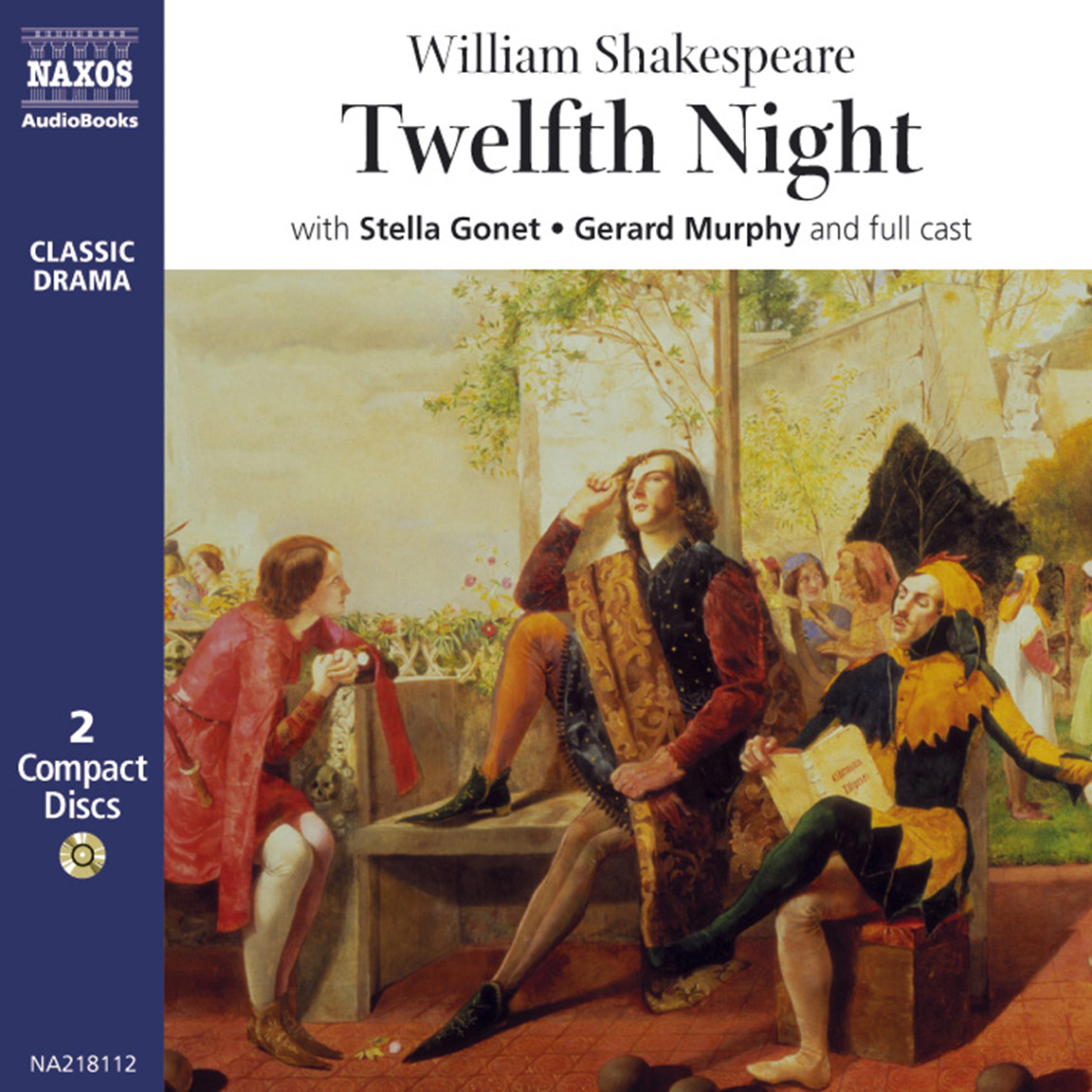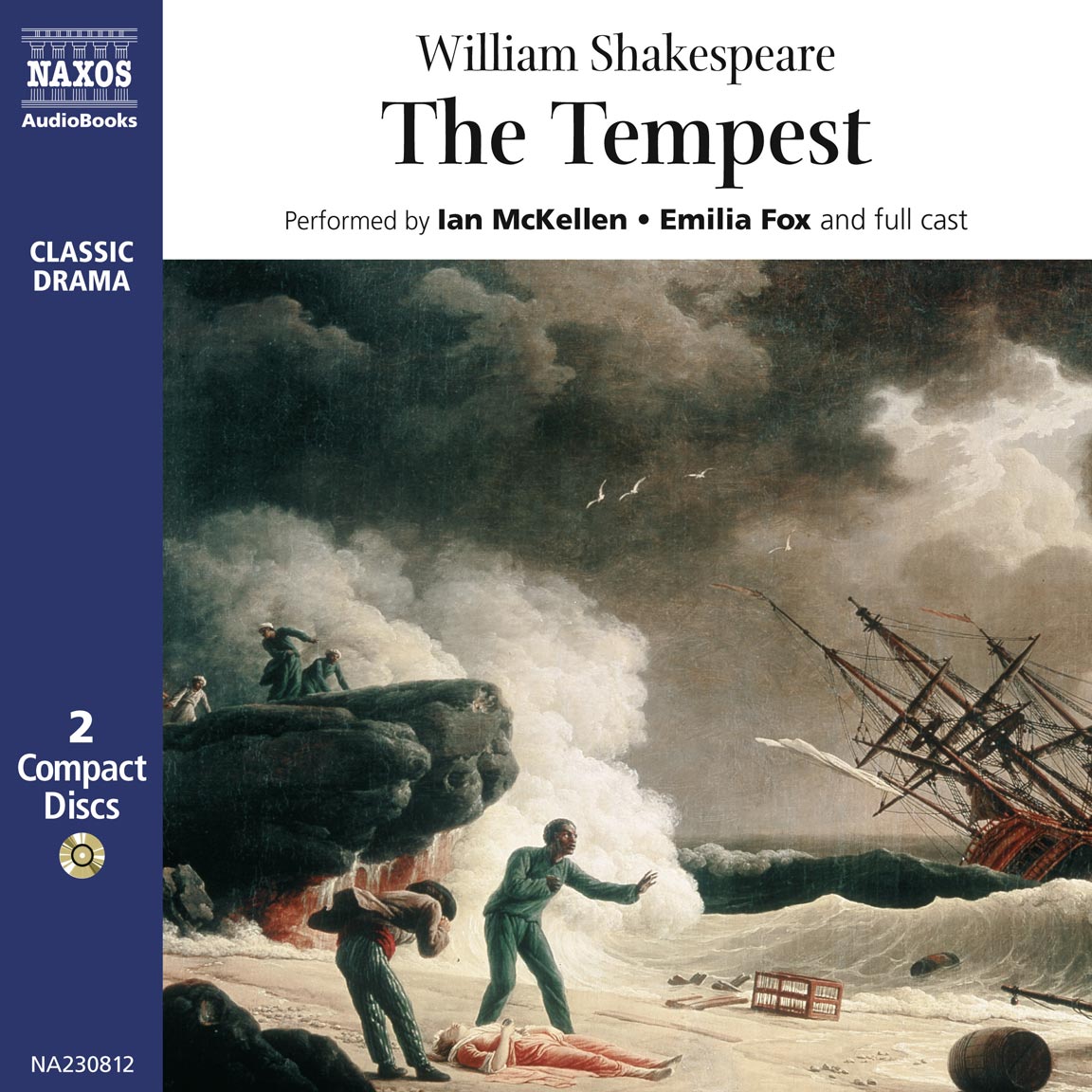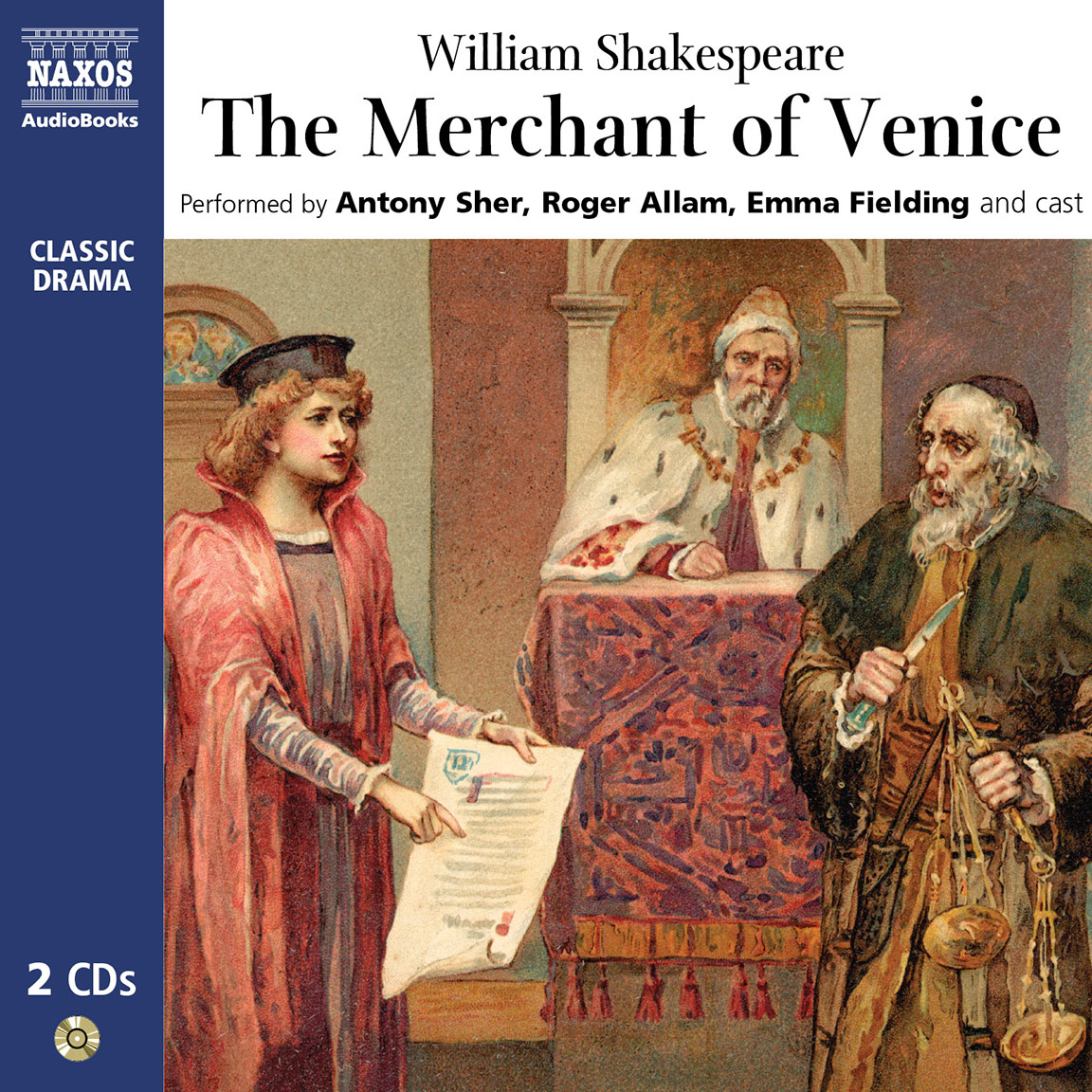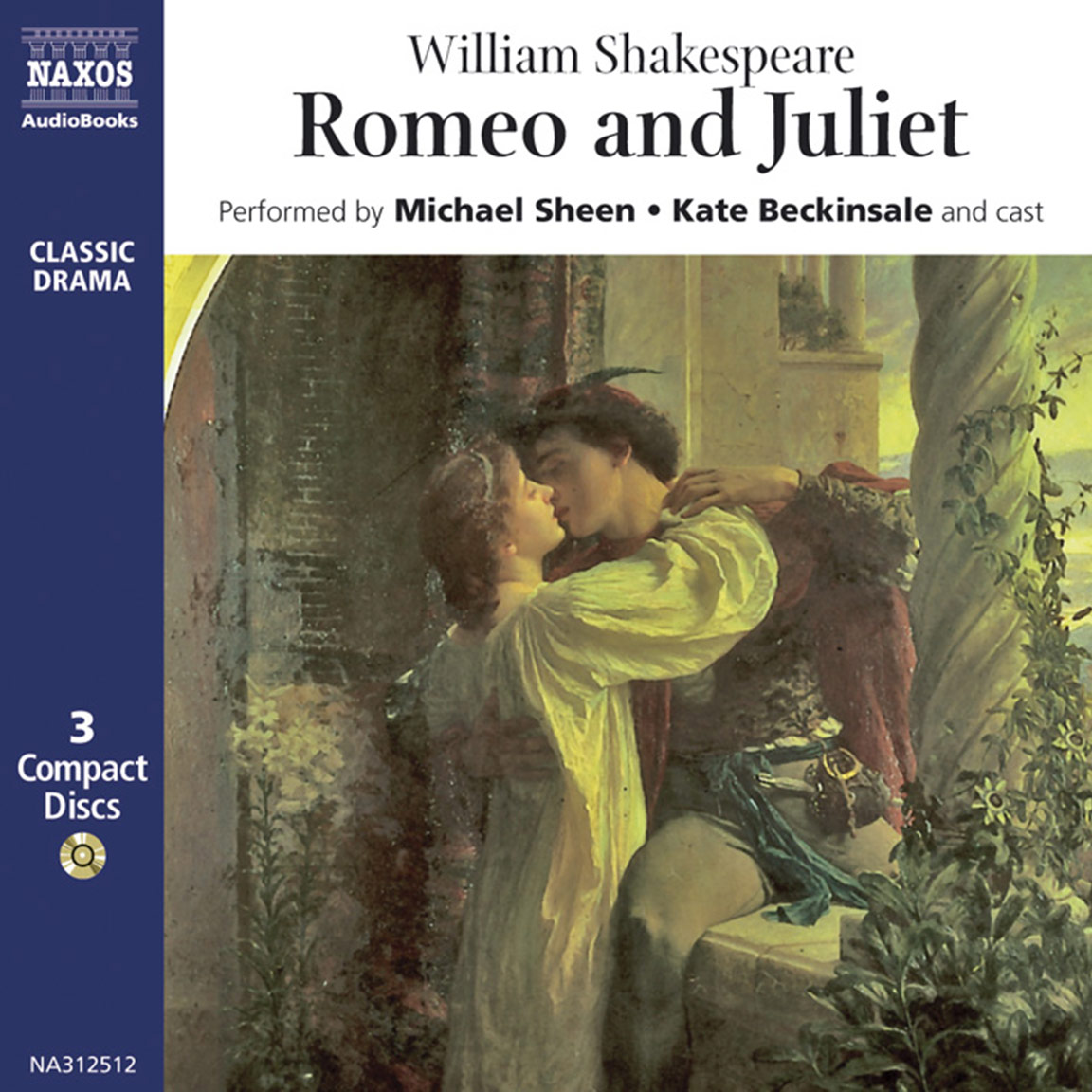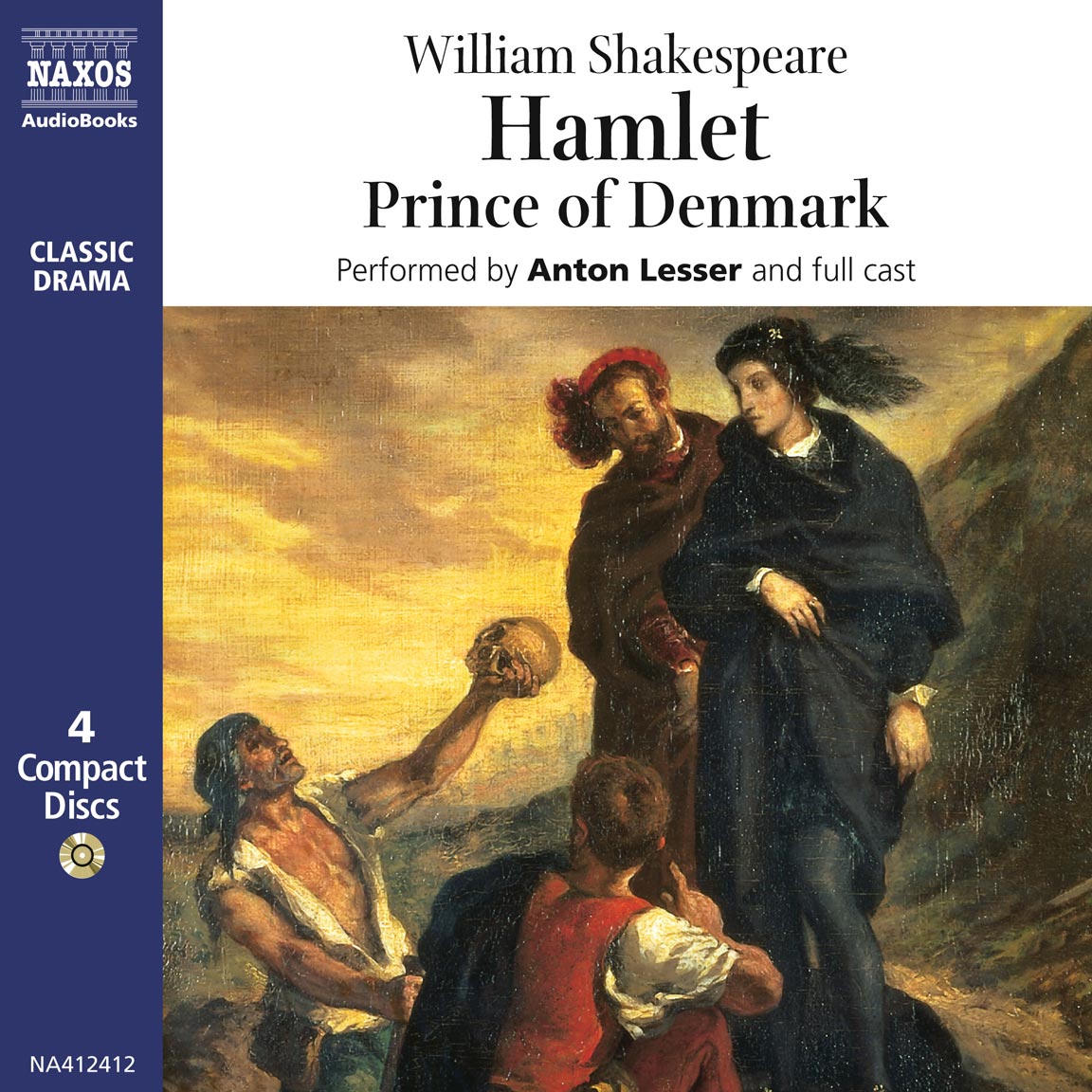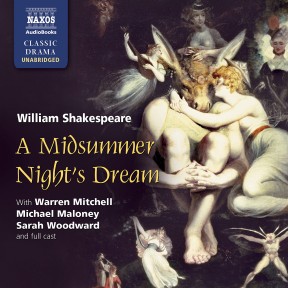
Audio Sample
William Shakespeare
A Midsummer Night’s Dream
Directed by Neville Jason
Performed by Michael Maloney, Warren Mitchell, Sarah Woodward, Jack Ellis, Karen Archer, Benjamin Soames, Jamie Glover, Cathy Sara, Emily Raymond, Ian Hughes, John Moffatt, Peter Kenny, Don McCorkindale, David Timson, John Rye, Emma Lindars, Sophie Nakhimoff, Laura Sheldon, Dominic Kraemer & Daisy Donovan
unabridged
A Midsummer Night’s Dream must be one of the most enduringly popular of Shakespeare’s plays, and it is not difficult to see why: the work blends several kinds of comedy with a powerful atmosphere of magic and mystery and a satisfying set of contrasts – between city and country, reason and imagination, love and infatuation.
-
Running Time: 2 h 19 m
More product details
Digital ISBN: 978-962-954-691-5 Cat. no.: NA315012 Download size: 66 MB Produced by: Nicolas Soames Directed by: Neville Jason Edited by: Simon Weir BISAC: DRA010000 Released: September 2000 -
Listen to this title at Audible.com↗Buy on CD at Downpour.com↗Listen to this title at the Naxos Spoken Word Library↗
Due to copyright, this title is not currently available in your region.
You May Also Enjoy
Cast
- Jack Ellis
- Theseus, Duke of Athens
- Karen Archer
- Hippolyta, Queen of the Amazons
- Benjamin Soames
- Lysander, in love with Hermia
- Jamie Glover
- Demetrius, suitor to Hermia
- Cathy Sara
- Hermia, in love with Lysander
- Emily Raymond
- Helena, in love with Demetrius
- Michael Maloney
- Oberon, King of the Fairies
- Sarah Woodward
- Titania, Queen of the Fairies
- Ian Hughes
- Puck, in the service of Oberon
- John Moffatt
- Quince, a carpenter
- Warren Mitchell
- Bottom, a weaver
- Peter Kenny
- Flute, a bellows-mender
- Don McCorkindale
- Snout, a tinker
- David Timson
- Snug, a joiner/Egeus, father of Hermia
- John Rye
- Starveling, a tailor/Philostrate, Master of the Revels
- Emma Lindars
- Peaseblossom, a fairy attending on Titania
- Sophie Nakhimoff
- Cobweb, a fairy attending on Titania
- Laura Sheldon
- Moth, a fairy attending on Titania
- Dominic Kraemer
- Mustardseed, a fairy attending on Titania
- Daisy Donovan
- Fairy, in the service of Titania
Booklet Notes
A Midsummer Night’s Dream must be one of the most enduringly popular Shakespeare’s plays, and it is not difficult see why: the work blends several kinds comedy with a powerful atmosphere magic and mystery and a satisfying set contrasts – between city and country, reason and imagination, love and infatuation.
The play dates from 1595-6, and therefore belongs to Shakespeare’s early maturity as a dramatist. There is some disagreement about whether A Midsummer Night’s Dream was specially written for an aristocratic wedding. No direct evidence for this speculation exists, although the festive and optimistic emphasis at the end – the fairies blessing the ‘bride-bed’ – would certainly be appropriate. One senses, too, a celebratory delight in the young writer’s new-found richness of ideas and mastery of form, and it is interesting to see from what a wide range of sources Shakespeare drew in order to create what is nevertheless a highly original work.
The Sources
The anticipation and completion of Theseus’ and Hippolyta’s wedding, which frames the action, is taken from Chaucer’s The Knight’s Tale. Puck’s origin, on the other hand, owes more to folklore than literature; the ‘mechanicals’ or ‘clowns’ (Bottom, Quince et al) are clearly caricatured Elizabethan working men, while the story of Pyramus and Thisbe came to Shakespeare through Golding’s translation of Ovid’s Metamorphoses. No single source, however, can account for the miraculous transformation Shakespeare works upon these diverse materials.
Synopsis of the play
Act 1, Scene 1: The setting is Athens. Theseus and Hippolyta look forward to their wedding in four days’ time. Egeus enters, angrily demanding that his daughter Hermia be forced to marry Demetrius, while Hermia defiantly asserts her love for Lysander. Lysander and Hermia, left alone, decide to elope the following night: they will meet in the wood outside the city. Helena enters, lamenting her unrequited love for Demetrius, and the lovers reveal their plan to her. Scene 2: A group of Athenian workmen plan to perform ‘Pyramus and Thisbe’ before the ‘Duke and Duchess on their wedding-day at night’. They agree to rehearse secretly in the wood on the next night.
Act 2, Scene 1: The action moves to the wood on the following evening. Puck, Oberon’s servant, meets a fairy belonging to Titania: then master and mistress appear, and quarrel violently over a ‘little changeling boy’ with whom Titania will not part. Oberon sends Puck off to fetch him the flower ‘love-in-idleness’, with the juice of which he will compel Titania to fall humiliatingly in love with the first creature she sees on waking. Demetrius enters, pursued by the lovesick Helena; Oberon, seeing this, instructs the returning Puck to anoint the eyes of the ‘disdainful youth’, Demetrius, so that he will again love Helena. Scene 2: Titania, in her bower, prepares for bed. Once she is asleep, Oberon squeezes the juice on her eyes.
Lysander and Hermia enter and lie down to sleep. Puck, mistaking one Athenian youth for another, anoints Lysander’s eyes. Helena, still pursuing Demetrius, stumbles across the sleeping Lysander who awakes, declares his passion for her and runs after her. Hermia wakes to find herself abandoned.
Act 3, Scene 1: The Athenian ‘mechanicals’ enter to rehearse their play. Bottom, awaiting his cue offstage, is mischievously transformed by Puck: he reappears with an ass’s head. His colleagues flee in terror, leaving Bottom to confront the ardour of the waking Titania who is ‘much enamoured’ of his ‘fair shape’. Scene 2: Puck and Oberon confer. Oberon, seeing Demetrius and Hermia, realises Puck’s error. He despatches Puck to bring Helena to him, meanwhile anointing the sleeping Demetrius’ eyes so that he may wake and see Helena. Lysander enters, protesting his love to Helena; their noise awakes Demetrius who thus joins Lysander in passionate courtship of her. Hermia enters sadly and then cannot understand Lysander’s coldness. All four fall to bitter quarrelling. Oberon therefore instructs Puck to lead the couples apart and then use the juice on Lysander’s eyes so that his love for Hermia will be restored.
Act Four, Scene 1: Titania cossets the bemused Bottom before they sleep. Oberon undoes the ‘hateful imperfection of her eyes’ and she accepts his victory in the quarrel. Dawn arrives, and with it Theseus, Hippolyta and Egeus, out hunting. They discoverthesleepingcouples.Onceawake, their obvious happiness together moves Theseus to overrule Egeus and propose a triple wedding. Bottom, alone, wakes to wonder at his ‘dream’. Scene 2: The ‘clowns’, in despair at the loss of Bottom, are overjoyed at his return.
Act 5, Scene 1: The wedding rites completed, Theseus calls for entertainment and chooses the clowns’ play, which is presented with ludicrous incompetence but sincere intention. All retire to bed at midnight, and the fairies enter to bless the house.
Stage History
We can be fairly sure that A Midsummer Night’s Dream was performed at court in 1604, but the next recorded occasion is in 1662 when Samuel Pepys saw a production and described it as ‘the most insipid ridiculous play that ever I saw in my life’. From this date until the 20th century A Midsummer Night’s Dream was only known in radically adapted versions.
Its musical potential was first exploited by Purcell in The Fairy Queen of 1692. The dominance of spectacle, dancing and music in this production was maintained throughout the 18th and 19th centuries, including (for example) Garrick’s 1755 version (The Fairies). Mme Lucia Vestris’ 1840 production restored most of Shakespeare’s text and at least restricted the number of songs, although the operatic style still predominated, with lavish special effects and a huge cast. Mendelssohn’s incidental music, composed in 1843, became de rigueur for all performances in the Victorian period – Max Reinholdt’s 1935 Hollywood version still maintained the tradition.
Harley Granville-Barker’s 1914 production restored the full text and stripped away Mendelssohn’s music and the overblown staging, thus emphasising ‘dramatic rather than scenic illusion’ (R.A. Foakes, introduction to the New Cambridge Shakespeare edition). Benjamin Britten’s 1960 opera based on A Midsummer Night’s Dream featured disturbingly vivid sets by John Piper and fairies more sinister than innocent, but it was Peter Brook’s 1970 production of the play which seemed at last to provide a truly 20th-century reading of the text. His set consisted of a bright white box in which the actors performed like circus artists, bringing out the ‘dark and powerful currents of sensuality’ (John Kane) within an apparently playful context.
Commentary
Certain themes stand out with obvious clarity in any reading of the play. Varieties of love abound: there is the naive infatuation of the young lovers, counterbalanced by the mature and rational affection between Theseus and Hippolyta; darker currents of lust are suggested by the Titania/Bottom liaison; and there is the innocent intensity of the mechanicals’ comradeship as they struggle to achieve pathos in their presentation of ‘Pyramus and Thisbe’, itself a story of tragic love in the mode of Romeo and Juliet.
The play, then, might be seen as a study of the blind power of love modified and ultimately blessed by the experience of suffering, albeit artificially condensed into one night of madness. How seriously we take these ideas will vary: Jan Kott famously drew attention to the dark and sinister aspects of the ‘fairy’ world, while cynics might point out that the happy resolution of the lovers’ difficulties is only achieved by the ‘artificial’ intervention of Oberon. Indisputably, the idea of transformation informs almost every part of the play:
Bottom is ‘translated’ into an ass; the lovers see each other afresh when they wake from their dream (‘And I have found Demetrius, like a jewel,/Mine own, and not mine own’); Theseus is suspicious of the transforming power of the imagination, yet Hippolyta reminds him that ‘all the story of the night told over,/And all their minds transfigured so together,/More witnesseth than fancy’s images…’ Something real and important, then, has occurred.
The mechanicals strive for dramatic realism and fall laughably short – yet their failure actually draws attention by contrast to the triumphant success of the play as a whole in seducing the audience into that ‘willing suspension of disbelief…which constitutes poetic faith’ (Coleridge).
Notes by Perry Keenlyside
